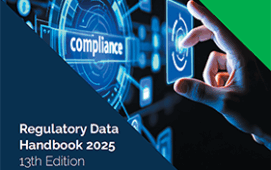The asset management arm and fully owned subsidiary of Lehman Brothers Holding, Legacy Asset Management Company (LAMCO), went live with Calypso Technology’s core derivatives platform for valuation and risk in June this year, following a nine month rollout. Gordon Chan, director of global marketing at the vendor, elaborates on the details of the implementation to Reference Data Review.
LAMCO was originally formed to serve as the asset management platform for Lehman’s parent but won legal approval to run Lehman’s less liquid assets, such as real estate and private equity, for a period of five years back in April 2010, in the wake of its parent company’s bankruptcy back in 2008 (see more about the data management challenges involved in the related examiner’s report). At the same time, Lehman sold its North American capital markets business to Barclays Capital and sold its European and Asian capital markets business to Nomura Holdings, but retained the majority of its assets due to the judgement that a liquidation of these assets would greatly diminish recovery value. The focus of LAMCO is therefore on maximising value over time for these less liquid legacy assets. To this end, the asset management firm also manages assets such as derivatives and corporate bonds for Lehman affiliates and has presence in New York, London and Hong Kong.
In order to be able to deal with the large volume of complex data related to instruments such as swaps, LAMCO decided to invest in a centralised platform to value both its historical and live trades. Prior to the implementation, more than 20 systems were in use for this process across the front, middle and back office in order to deal with a range of instrument types including derivatives, bank debt, real estate and commodities, explains Chan.
“The migration process has involved around 500,000 trades across multiple asset classes in rates and credit products on the Calypso software as a service (SaaS) offering,” he elaborates. “The aim was for LAMCO to enable a much quicker pricing and valuation process and to provide consistency across the various asset classes in question, as well as more transparency into the process overall.”
This migration period took just under nine months, during the first three months of which, Calypso was able to complete the migration of the simpler vanilla products, he says. The process was tackled in phases, from the simpler products to the most complex during the final stages. Chan indicates that, as with most of these kinds of implementations, the vendor faced some mapping challenges with regards to the high number of underlying systems involved. Moreover, LAMCO also had some unique requirements with regards to quant models for pricing.
However, the firm is now able to use the hosted platform in order to slice and dice the pricing data as required by the various functions across the organisation, as well as receiving middle office and desk level support from the vendor. It also serves as the central market data repository for all third party market data and is used by the estate on a historical and go forward basis in the management of LAMCO’s live portfolio.
Subscribe to our newsletter




